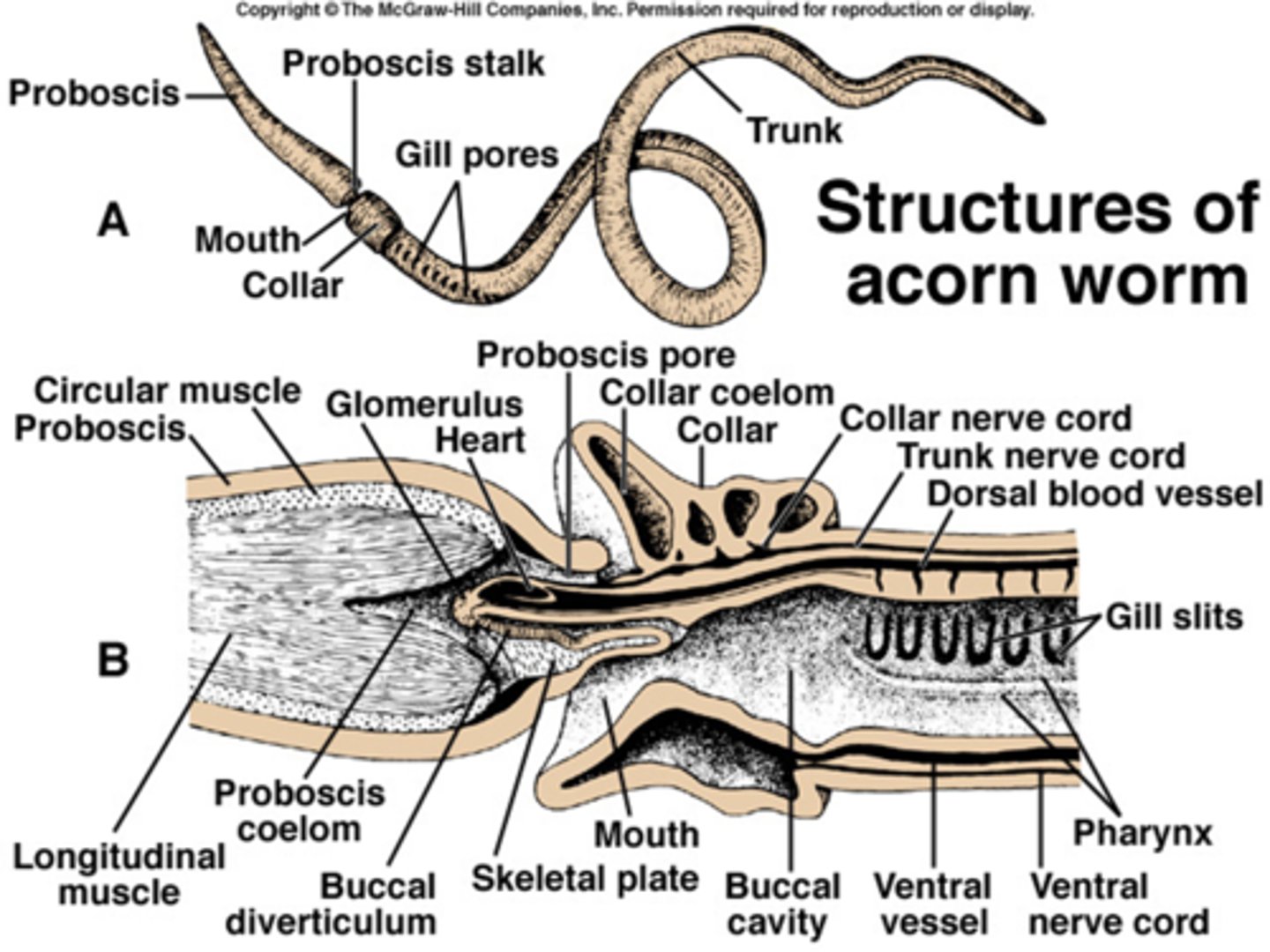Echinoderms
1/20
There's no tags or description
Looks like no tags are added yet.
Name | Mastery | Learn | Test | Matching | Spaced |
|---|
No study sessions yet.
21 Terms
What is an Echinoderm?
any marine animal having a radiating arrangement of parts and a body wall stiffened by calcareous pieces that may protrude as spines, such as starfish and sea urchins
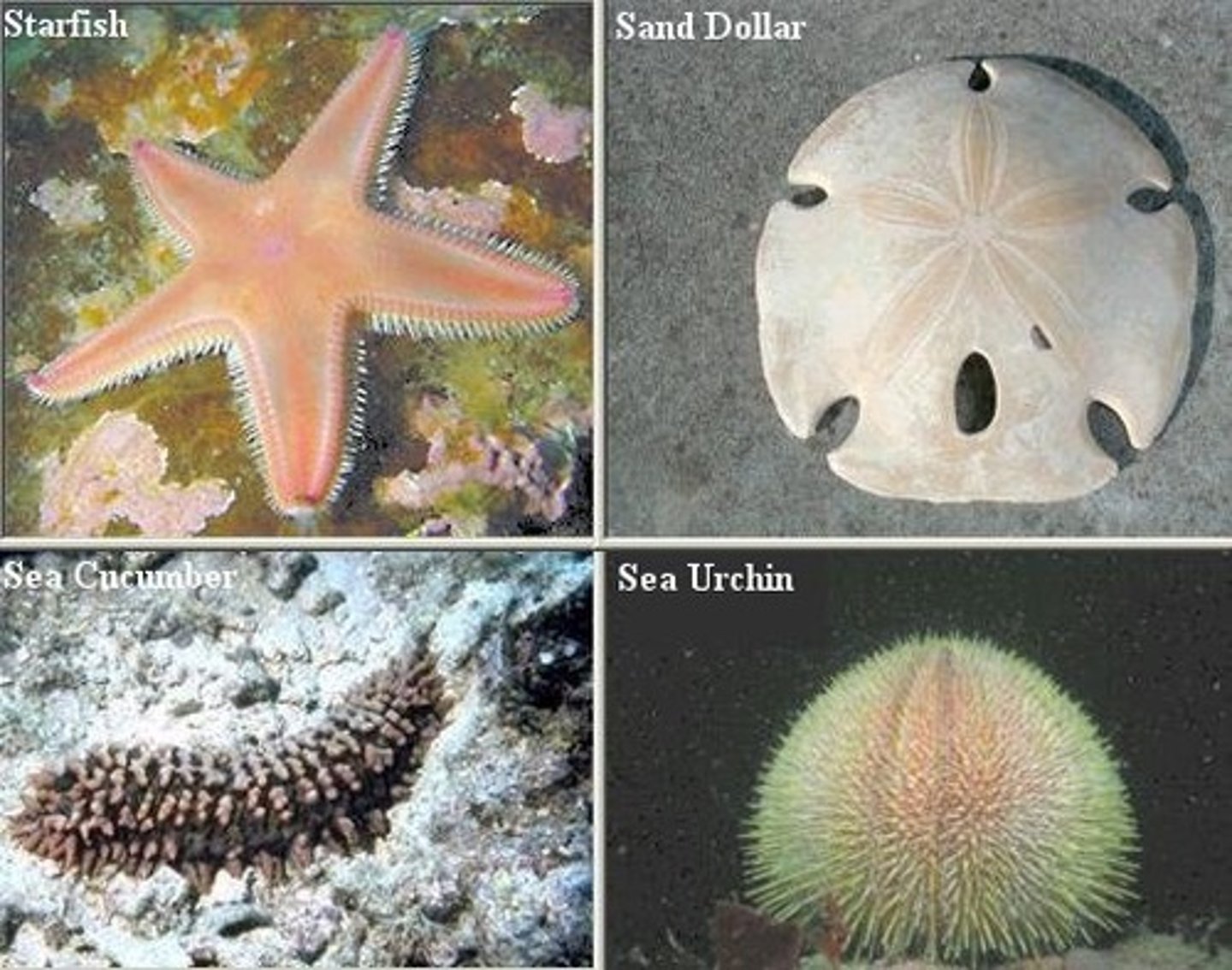
Deuterostomes
term for Animals in which the blastopore becomes the anus during early embryonic development
-coelom develops by enterocoely
-gill slits in the pharynx
-Ambulacraria group = echinoderms and hemichordates
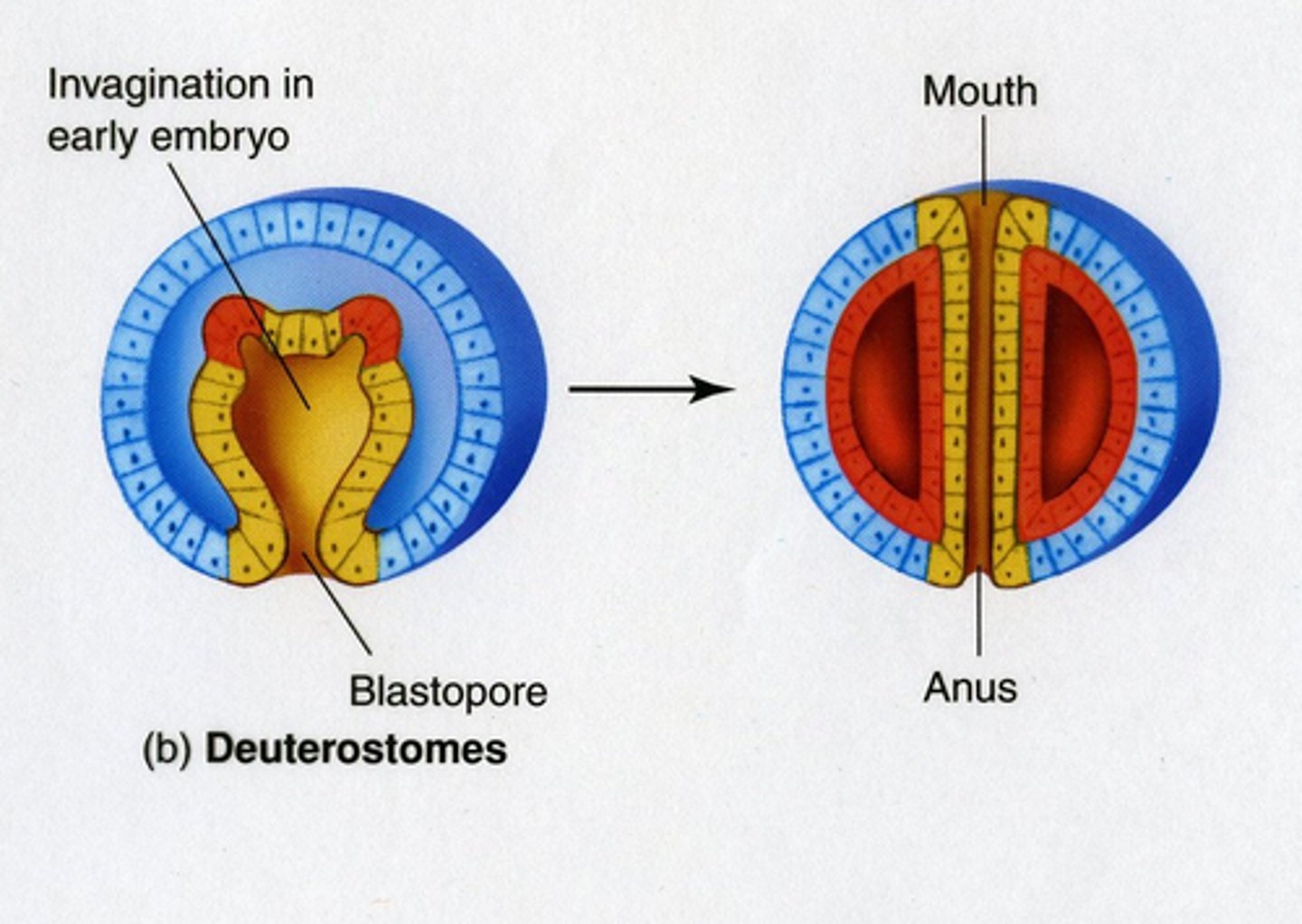
Phylum chaetognatha
this phylum consists of arrow worms
-unknown evolutionary position (deuterostome? protostome?)
-marine plankton
-covered by cuticle
-complete digestive system
-coelom
-nerve ring and sense organs
-enterocoelous
-cleavage similar to crustaceans
-eyes w/ sensory bristles
-hermaphroditic
-self fertilization
-lacks respiratory/ excretory system
-longitudinal muscles
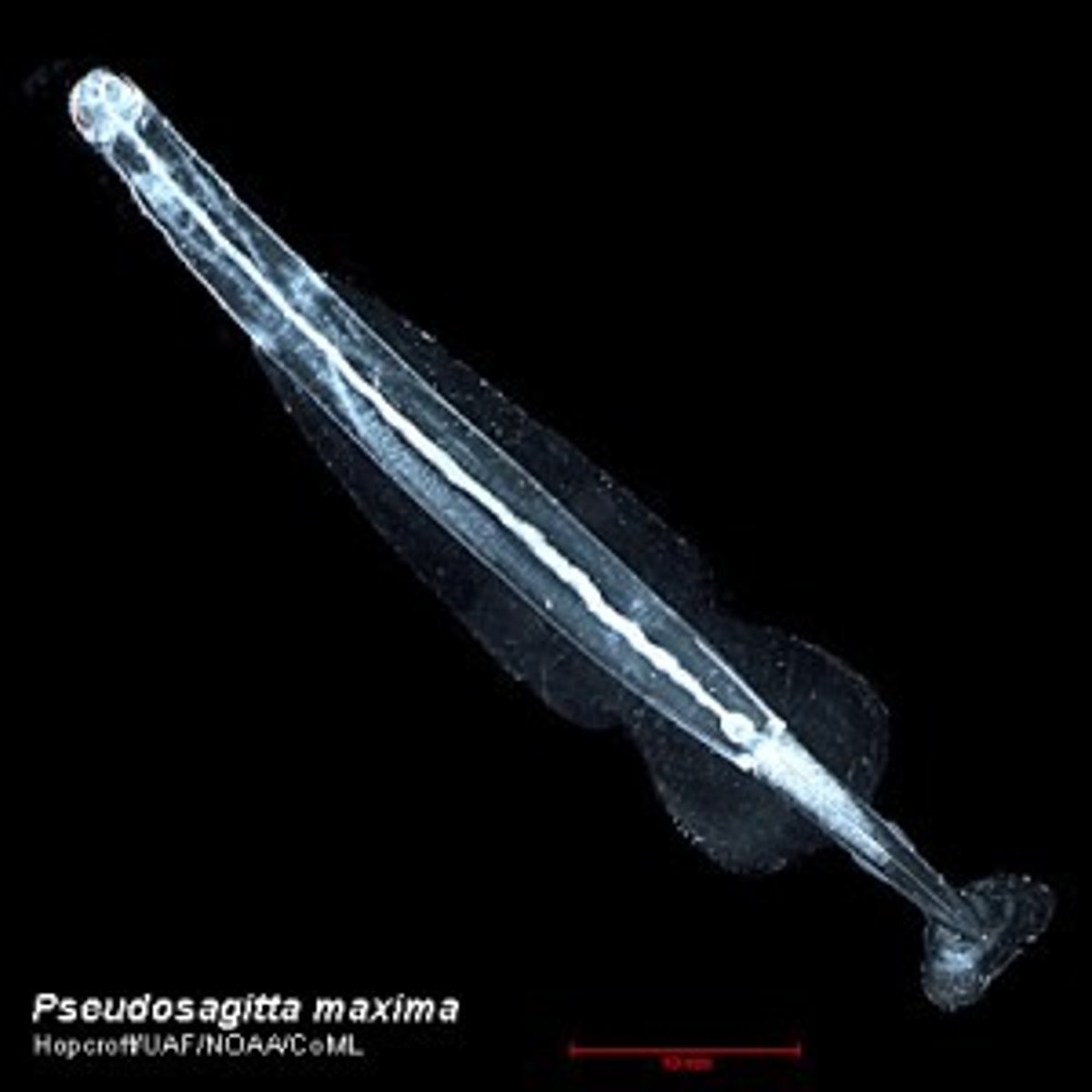
Regulative development
development type in which destruction of an embryonic cell has no effect on the adult
-extra blastomeres can form new organisms
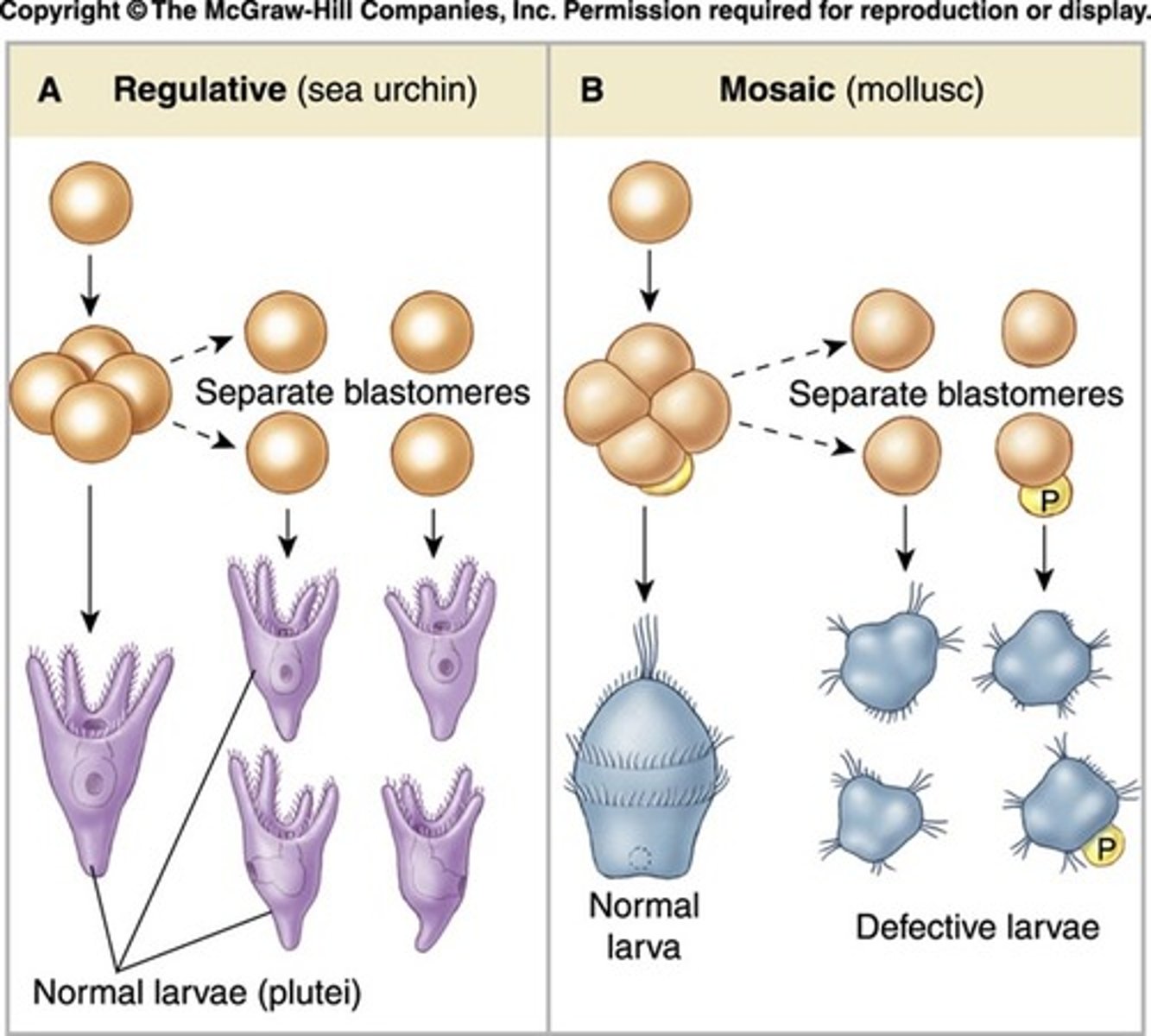
mosaic development
development type in which destruction of an embryonic cell leads to missing adult tissues

Enterocoelous
term for when the archenteron forms the coelom

Phylum Echinodermata
this phylum consists of urchins, sea stars, sand dollars, etc.
-"spiny skin"
-Endoskeleton of plates or scattered ossicles
-water vascular system
-tube feet and pedicellariae
-dermal branchiae
-pentaradial symmetry in adults
-no brain
-simple sense organs
pentaradial (pentamerous symmetry)
term for a circular body plan that can be divided into 5 equal parts
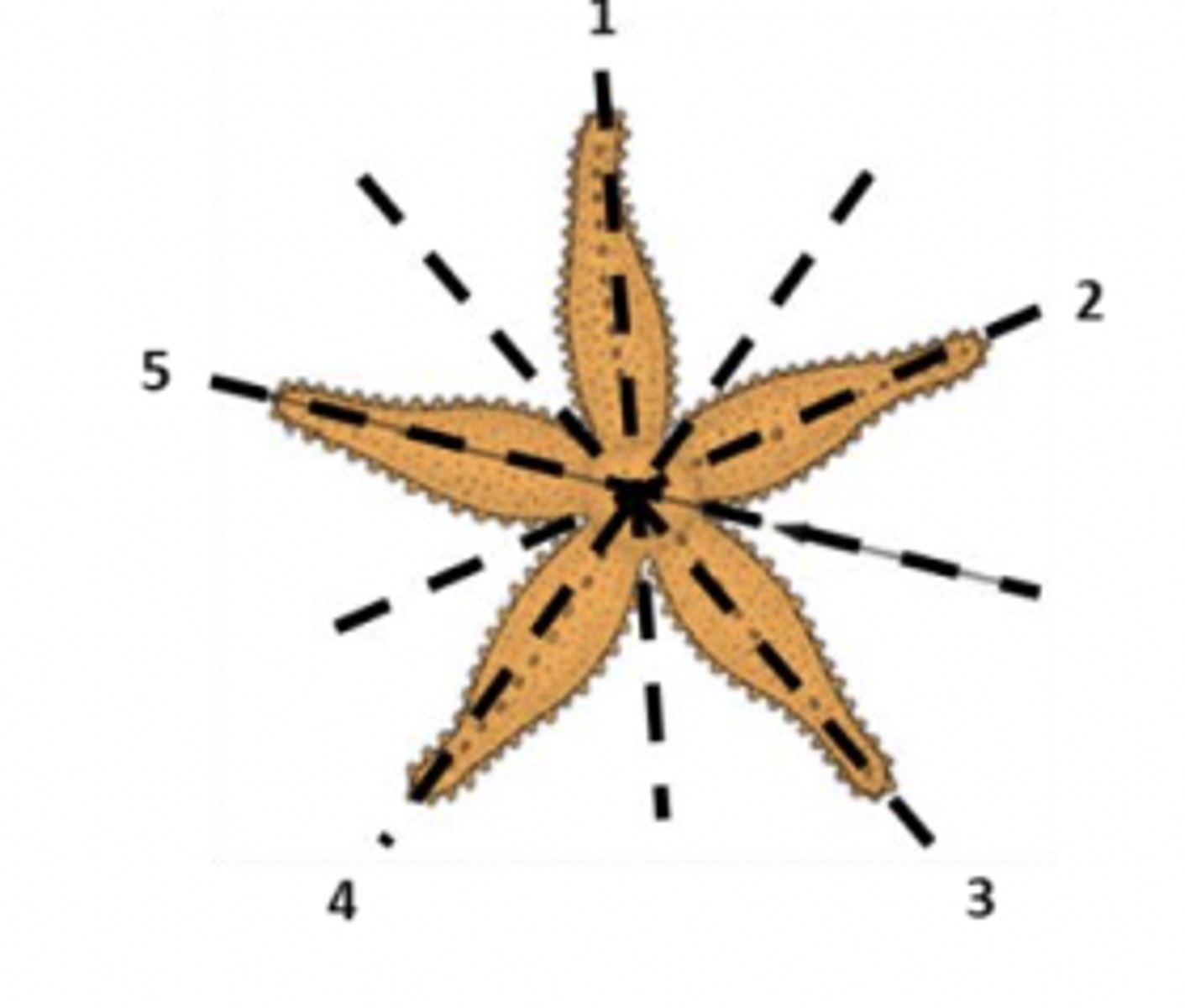
Class Crinoidea (Phylum Echinodermata)
this class consists of sea lilies and feather stars
-Doliolaria larva
-sessile adults (stalk and holdfast)
-marine
-arms w/ pinnules for filter feeding
-Ambulacral groove that transports food
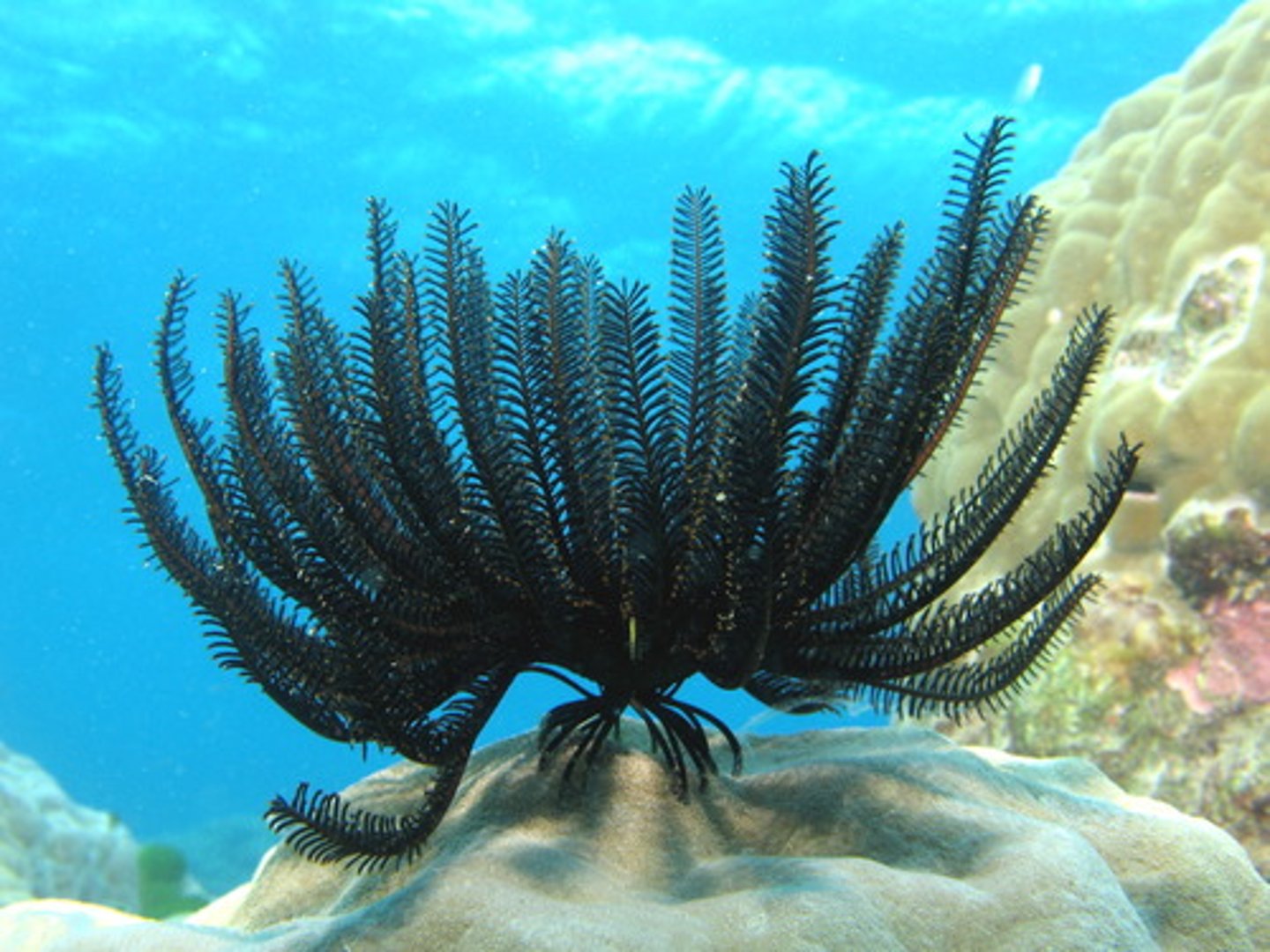
Class Asteroidea
this class consists of sea stars
-Bipinnaria and Brachiolaria
-live on rocky, sandy, muddy substrates
-predators
-5 arms
-oral + aboral surfaces
-tube feet in ambulacral grooves
-madreporite opening to let water into water Vasc. system
-carnivorous
-evert stomach between valves of bivalve shell
-external fert
-indirect or direct development
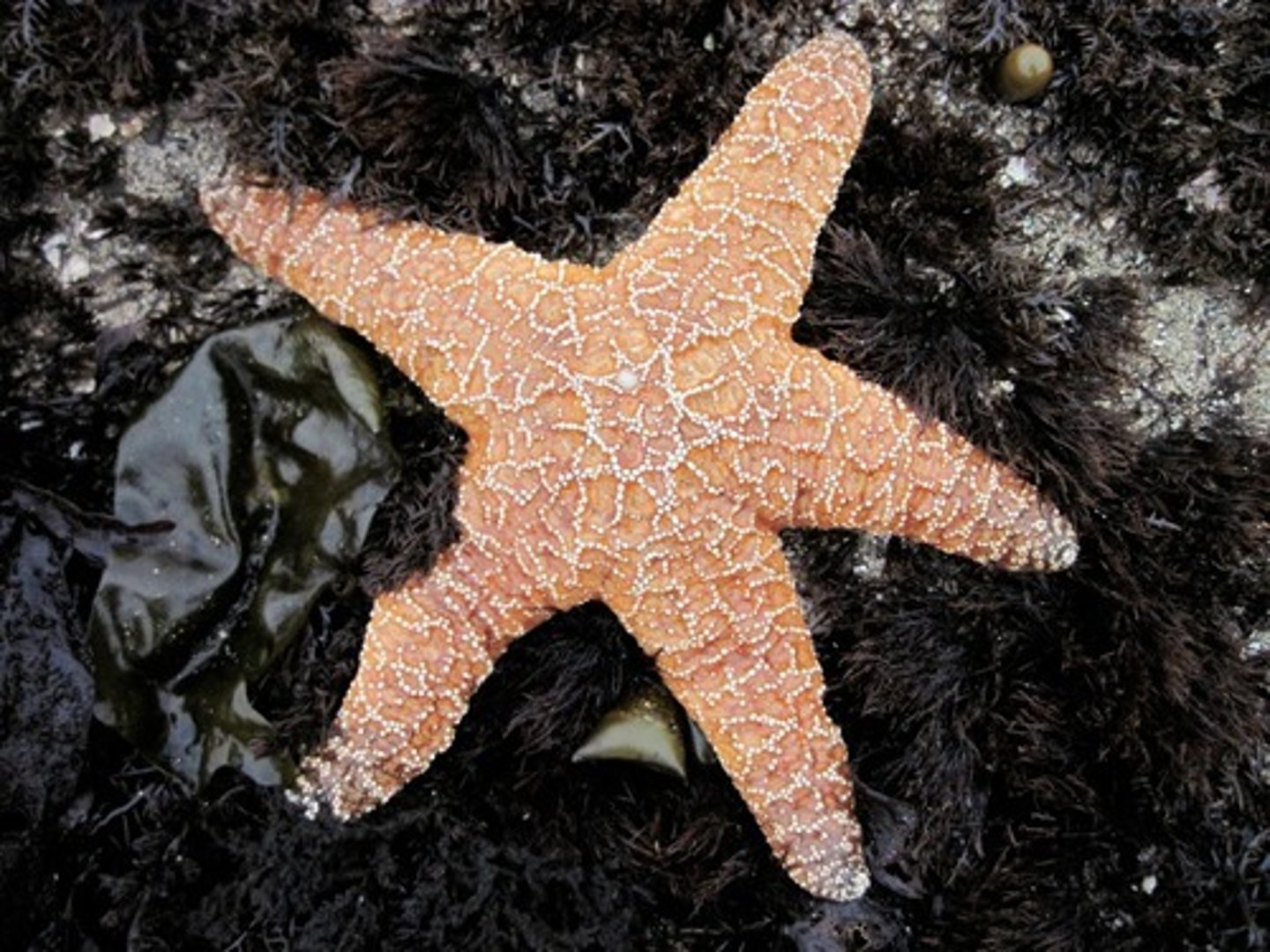
water vascular system
This system works:
Madreporite allows water in to flow through stone canal, ring canal, radial canals, lateral canals, then tube feet
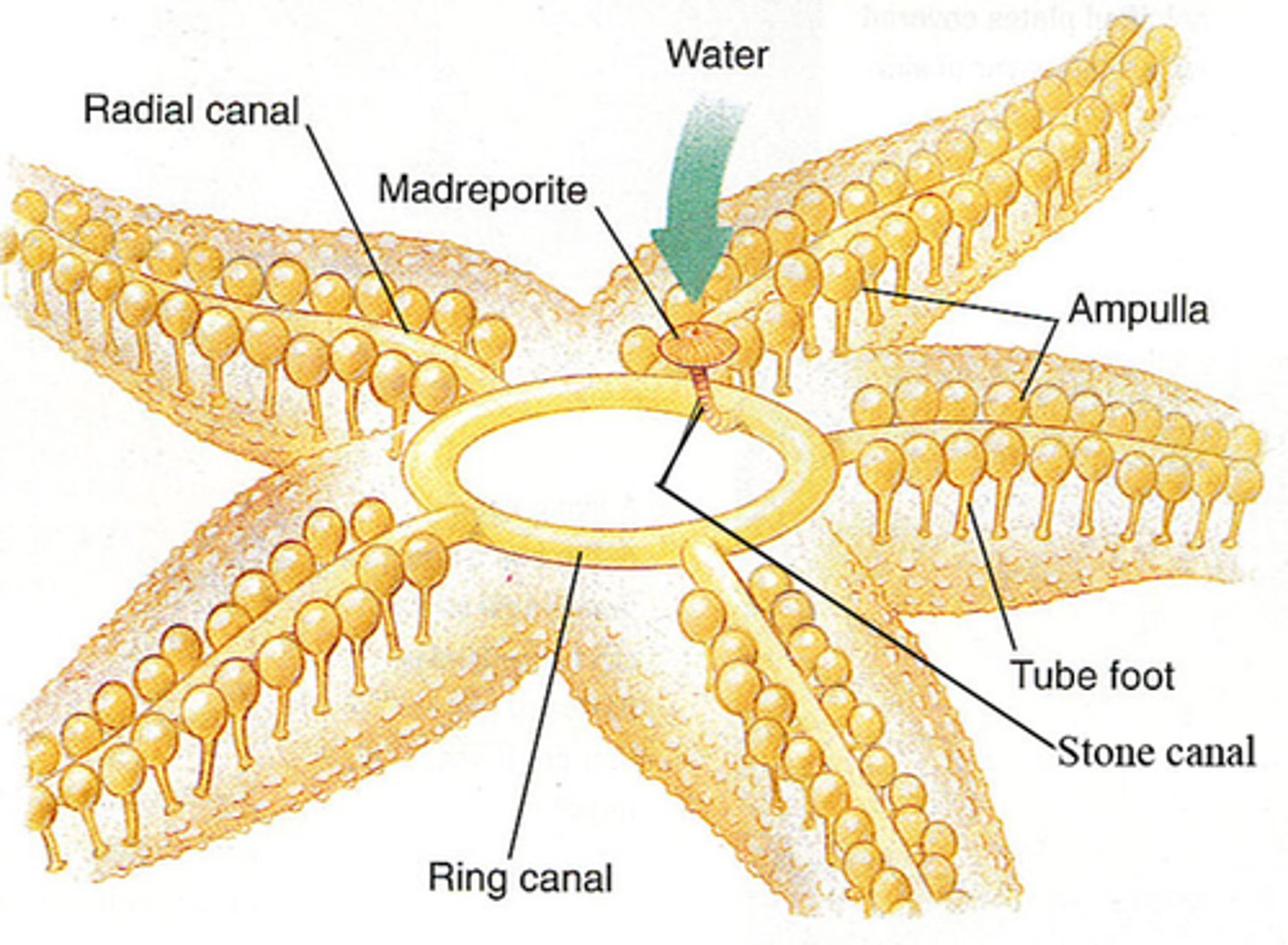
starfish anatomy
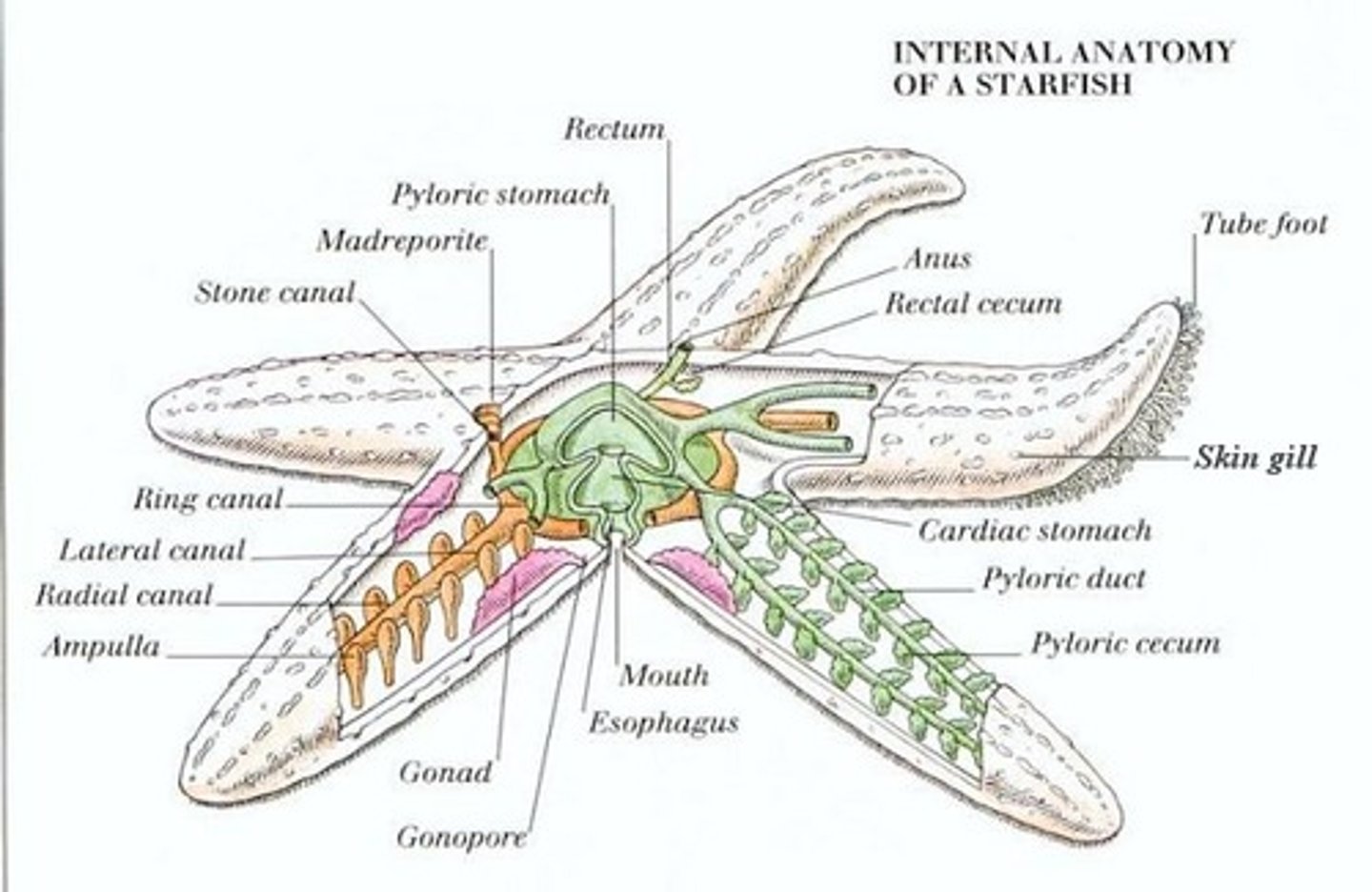
Class Asteroidea life cycle
-usually external fertilization
-indirect development
-bipinnaria larva > brachiolaria larva > metamorphosis > juvenile
-some w/ direct development
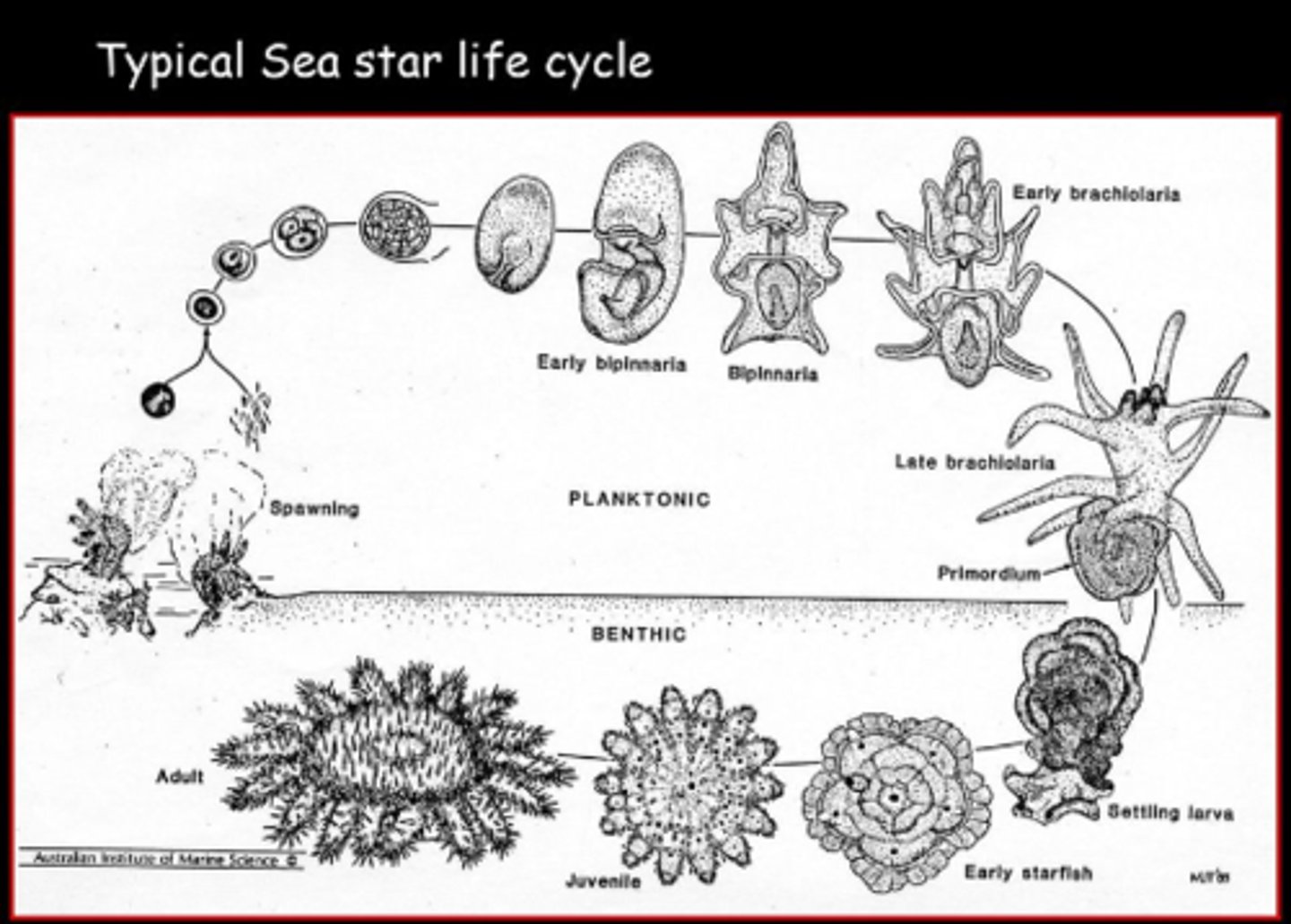
Class Ophiuroidea
this class consists of brittle stars and basket stars
-Ophiopluteus larva
-5 arms, no pedicellariae
-gills
-closed ambulacral grooves
-tube feet w/ suckers
-move by muscular action of arms
-feed on small particles

ambulacral groove
term for A channel along the oral surface of echinoderms through which the tube feet protrude
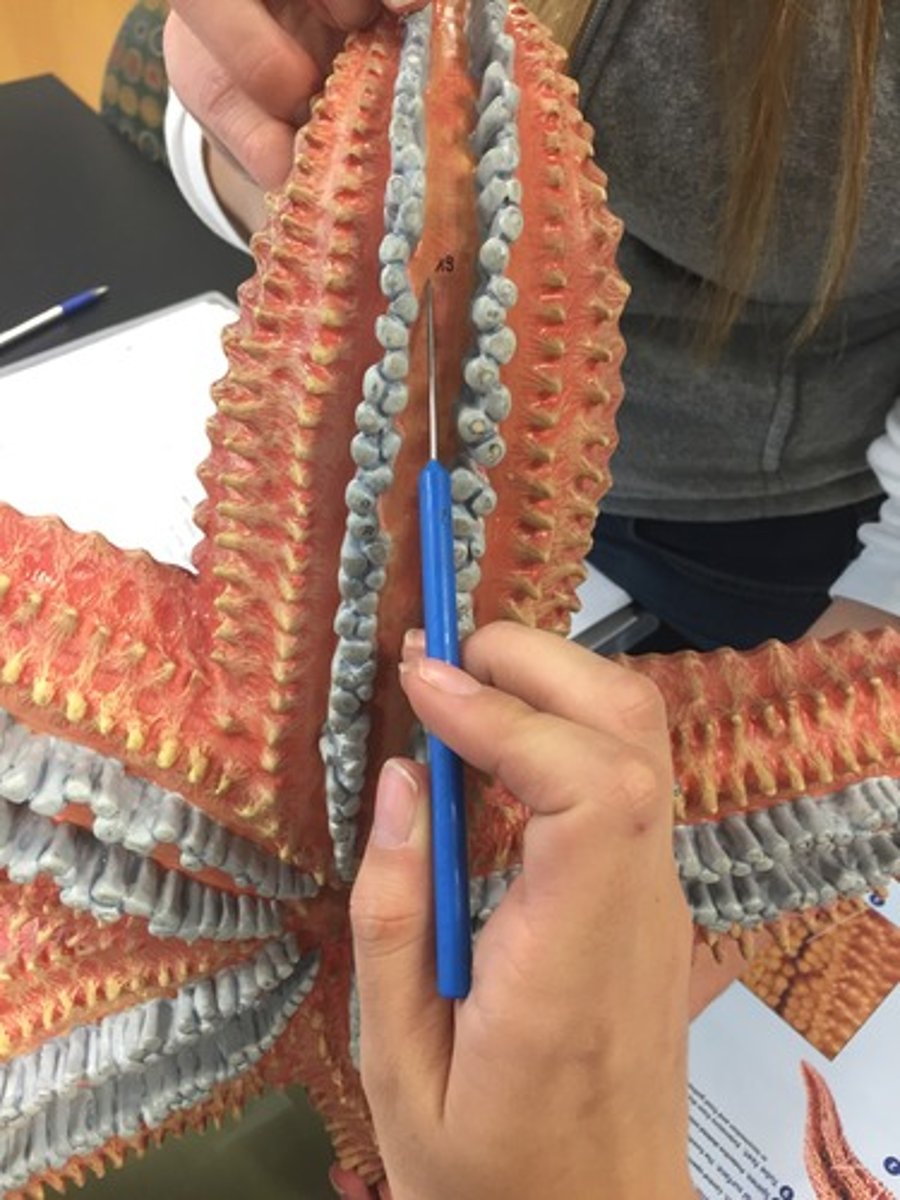
pedicellariae
term for tiny pincers that are used for surface maintenance by sea stars and some sea urchins
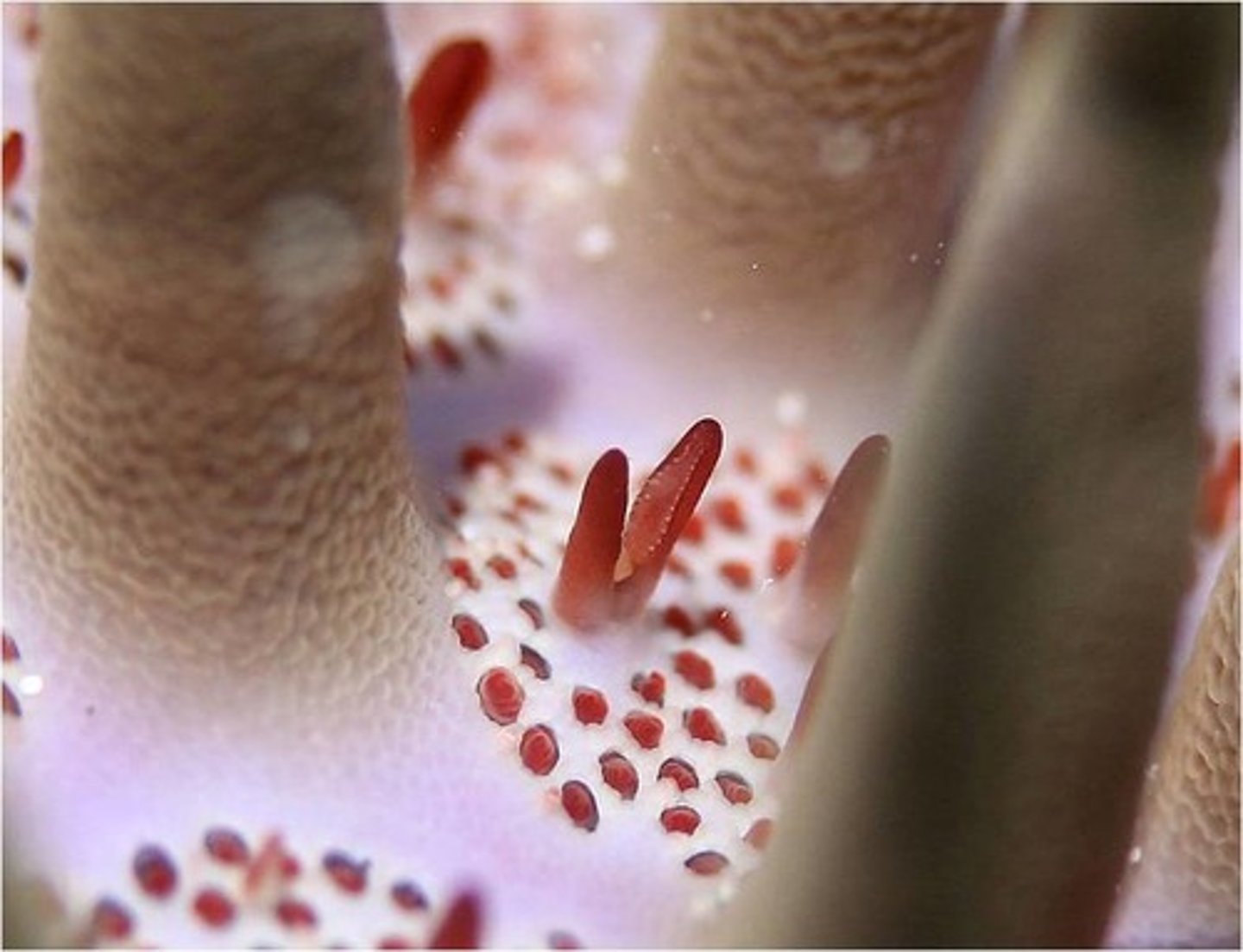
Class Echinoidea
this class consists of sea urchins and sand dollars
-Echinopluteus larva
-closed ambulacral grooves
-spines for locomotion
-no arms
-tube feet and pedicellariae
-solid shell (test) formed by dermal ossicles
-Aristotle's lantern (complex mouthpart for feeding)
-herbivores, may be carnivores
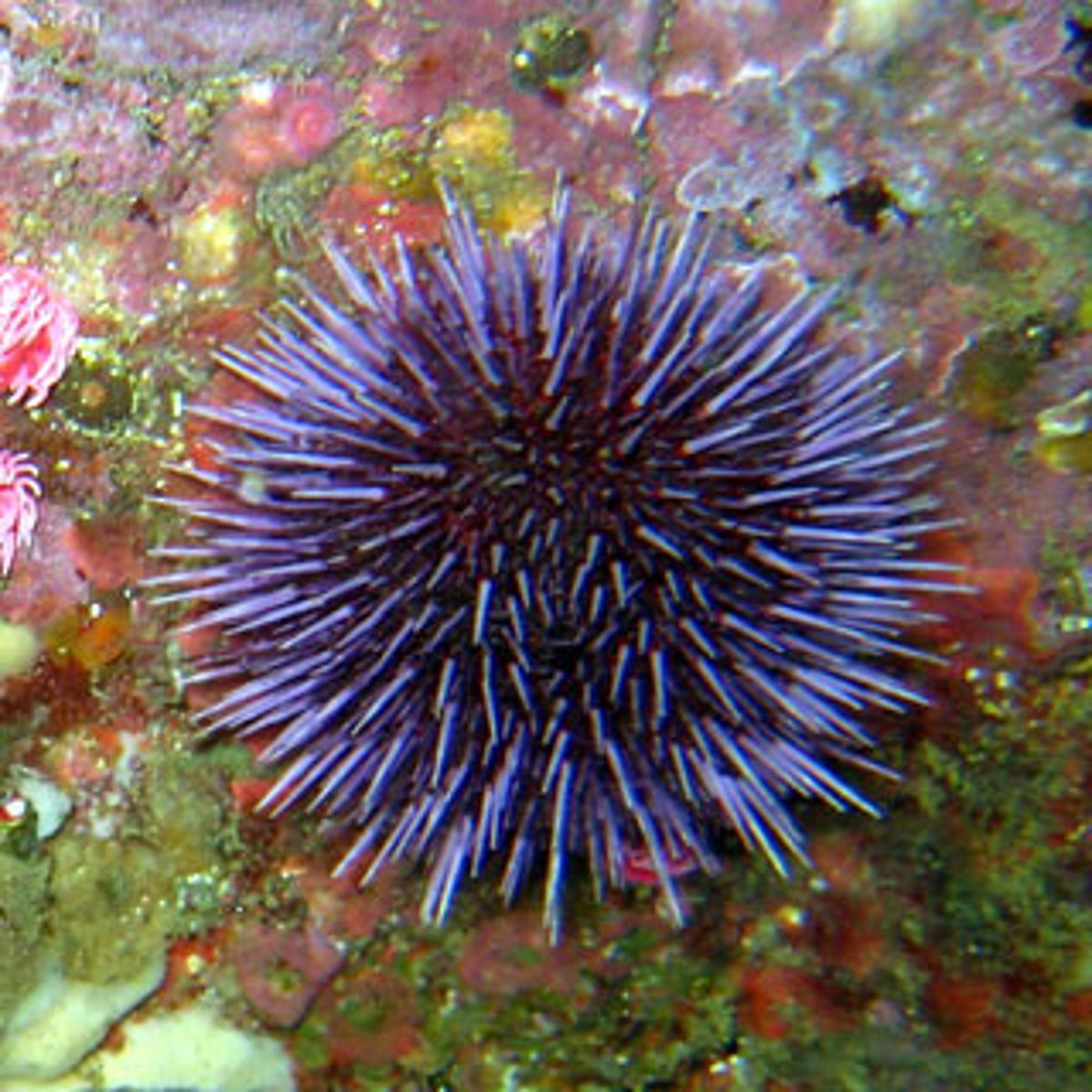
Class echinoidea anatomy

Class Holothuroidea
this class consists of sea cucumbers
-Auricularia larva
-elongated oral-aboral axis
-reduced ossicles
-oral tentacles
-respiratory tree (near cloaca)
-breathe through anus
-feed on small particles
-eject guts for defense
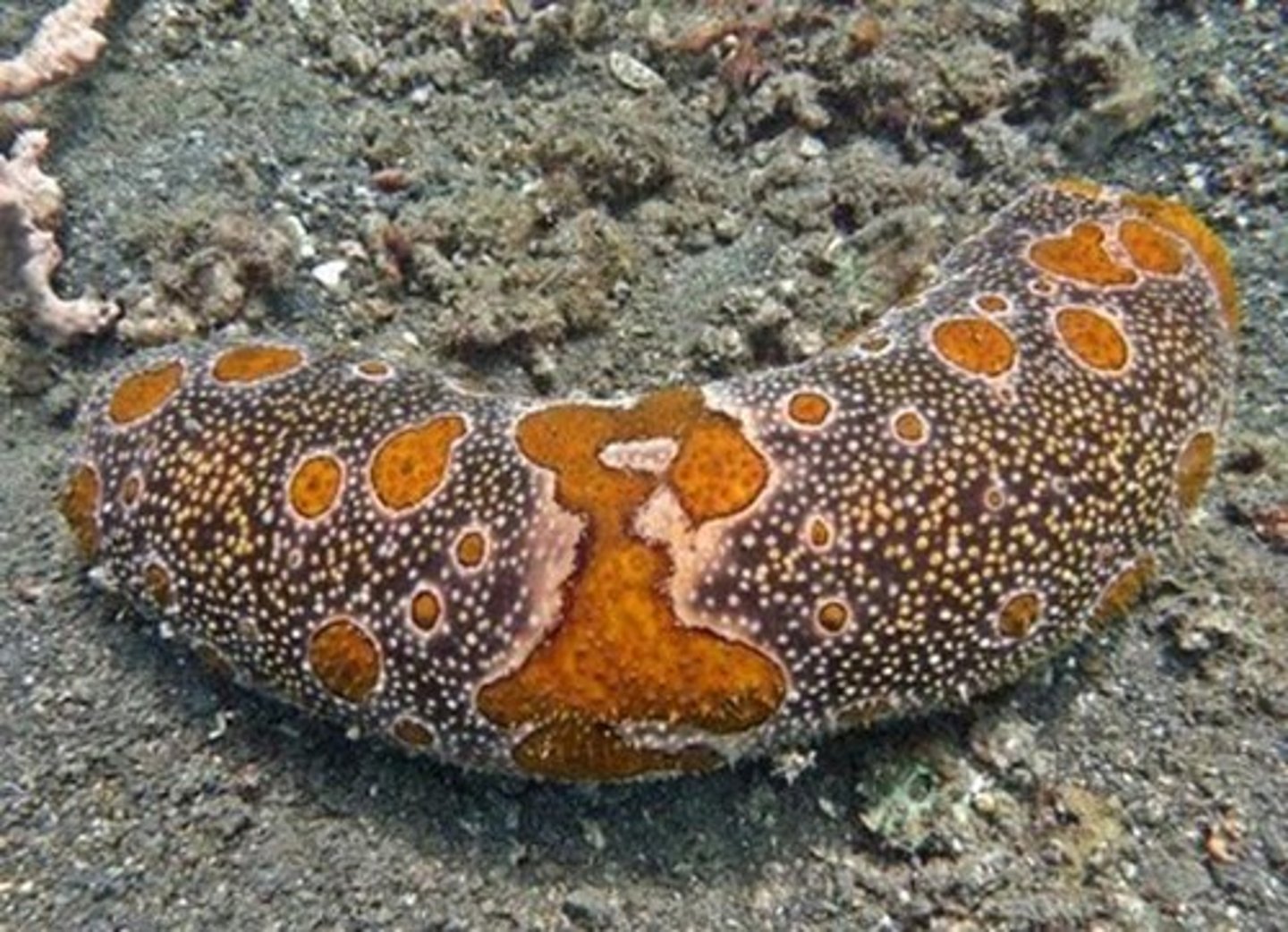
Ossicles
these are microscopic, calcareous elements found in the dermis of the body wall. They are part of the endoskeleton and provide rigidity and protection
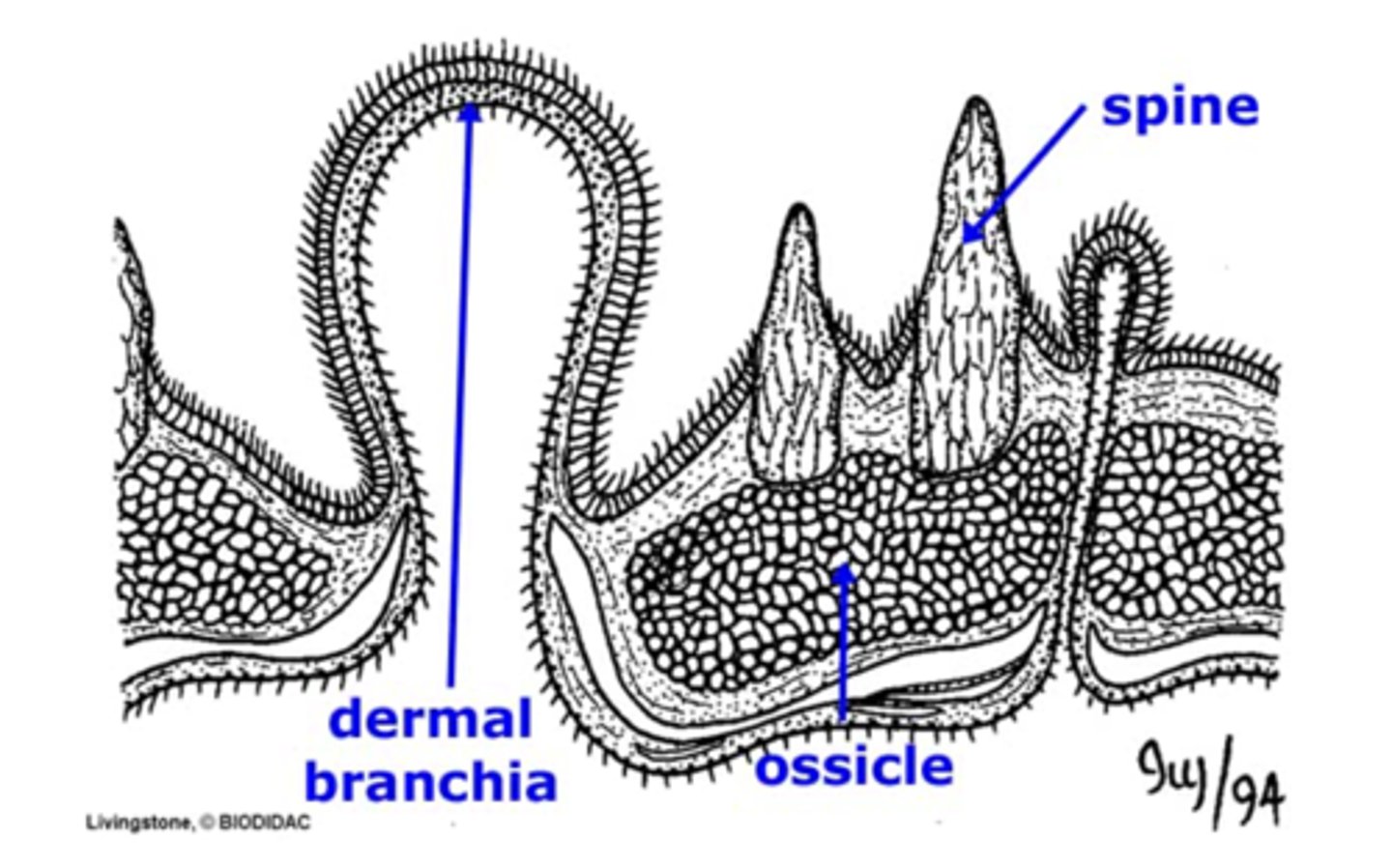
Phylum Hemichordata
this phylum consists of acorn worms (enteropneusta + Pterobranchs)
-In clade Ambulacraria due to tornaria larva resembling sea star bipinnaria larva
-gill slits (show related to chordates)
